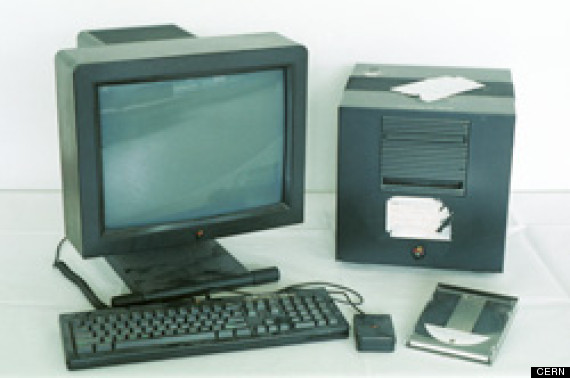World’s First Website, Created By Tim Berners-Lee In 1991
Sir Berners-Lee
Berners-Lee is the director of the World Wide Web Consortium (W3C), which oversees the continued development of the Web.
The World Wide Web (W3) is a wide-area hypermedia information retrieval initiative aiming to give universal access to a large universe of documents. It aims to allow information sharing within internationally dispersed teams and the dissemination of information by support groups. Originally aimed at the High Energy Physics community, it has spread to other areas and attracted much interest in user suppuort, resource discovery and collaboratie work areas.
Berners-Lee first proposed his idea for a worldwide network of computers sharing information in 1989, while he was working at the European Organization for Nuclear Research (CERN) in Geneva, Switzerland. According CERN’s history of the first website, it was written on a NeXT computer (pictured below), made by the company Steve Jobs founded after his ouster from Apple back in 1985.

FIGURE 1 :CERN
By October of 1990, Tim had written the three fundamental technologies that remain the foundation of today’s web (and which you may have seen appear on parts of your web browser):
- HTML: HyperText Markup Language. The markup (formatting) language for the web.
- URI: Uniform Resource Identifier. A kind of “address” that is unique and used to identify to each resource on the web. It is also commonly called a URL.
- HTTP: Hypertext Transfer Protocol. Allows for the retrieval of linked resources from across the web.
What is World Wide Web?
FIGURE 2 : VIDEO
* It is a network of online content that is formatted in HTML and accessed via HTTP. The term refers to all the interlinked HTML pages that can be accessed over the Internet.
* The internet in contrast is the underlying network connection that allows us to send email and access the World Wide Web.
* The early Web was collection of text-based sites hosted by organizations that were technically gifted enough to set up a Web Server and learn HTML.
* It is all the Web pages, pictures, videos and other online content that can be accessed via a Web browser.
* It has continued ti evolved since the original design and it now includes interactie (social) media and user-generated content that requires little to no technical skills.
World Wide Web (reference)
The WorldWideWeb (W3) is a wide-area hypermedia information retrieval initiative aiming to give universal access to a large universe of documents.
Everything there is online about W3 is linked directly or indirectly to this document, including an executive summary of the project, Mailing lists , Policy , November's W3 news , Frequently Asked Questions .
- What's out there?
- Pointers to the world's online information, subjects , W3 servers, etc.
- Help
- on the browser you are using
- Pointers to the world's online information, subjects , W3 servers, etc.
A list of W3 project components and their current state. (e.g. Line Mode ,X11 Viola , NeXTStep , Servers , Tools , Mail robot , Library )
- Technical
- Details of protocols, formats, program internals etc
- Bibliography
- Paper documentation on W3 and references.
People
- A list of some people involved in the project.
- A summary of the history of the project.
- How can I help ?
- If you would like to support the web..
- Getting code
- Getting the code by anonymous FTP , etc.
- History of World Wide Web
http://www.w3.org/History.html
History

No comments:
Post a Comment